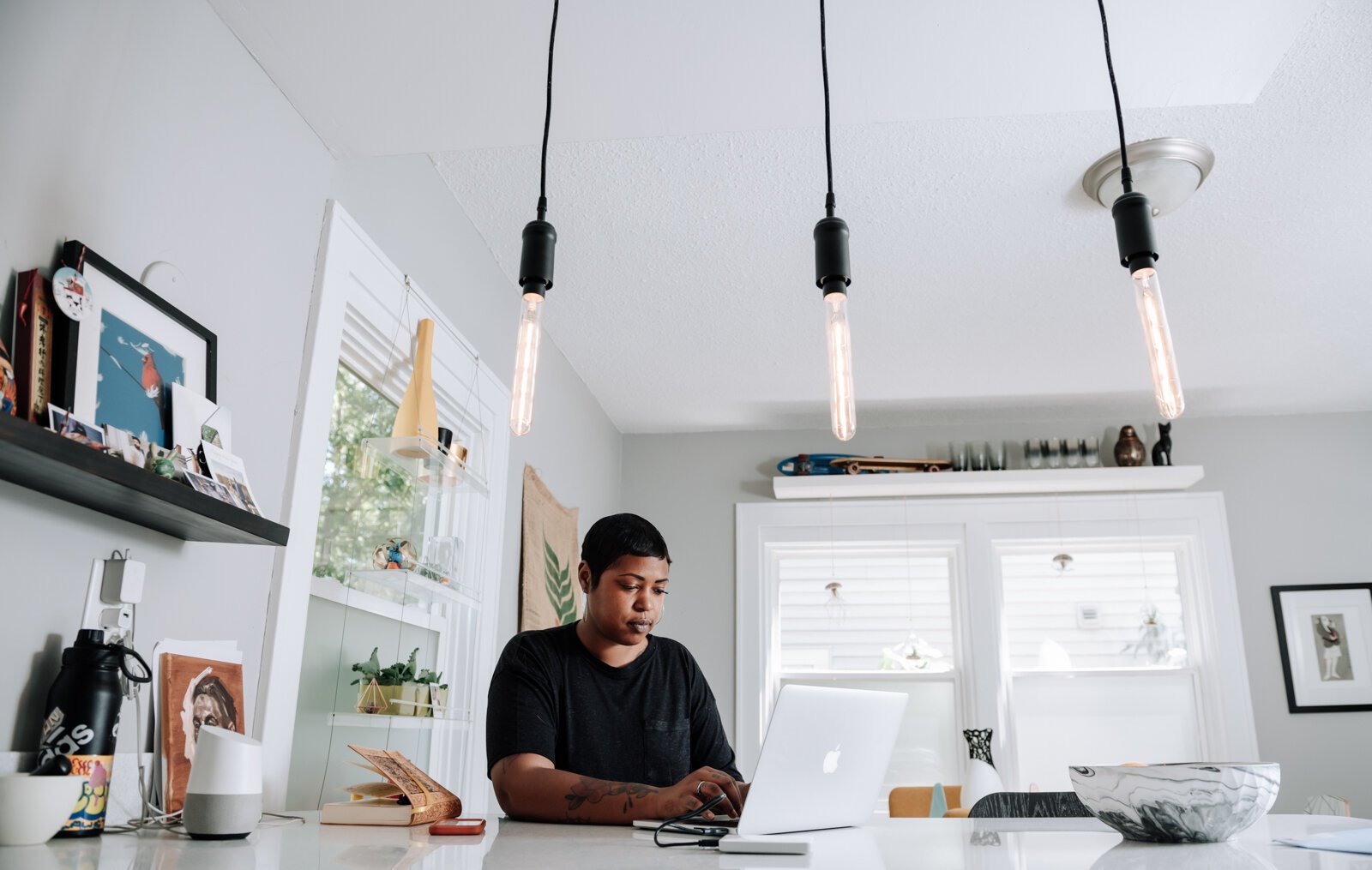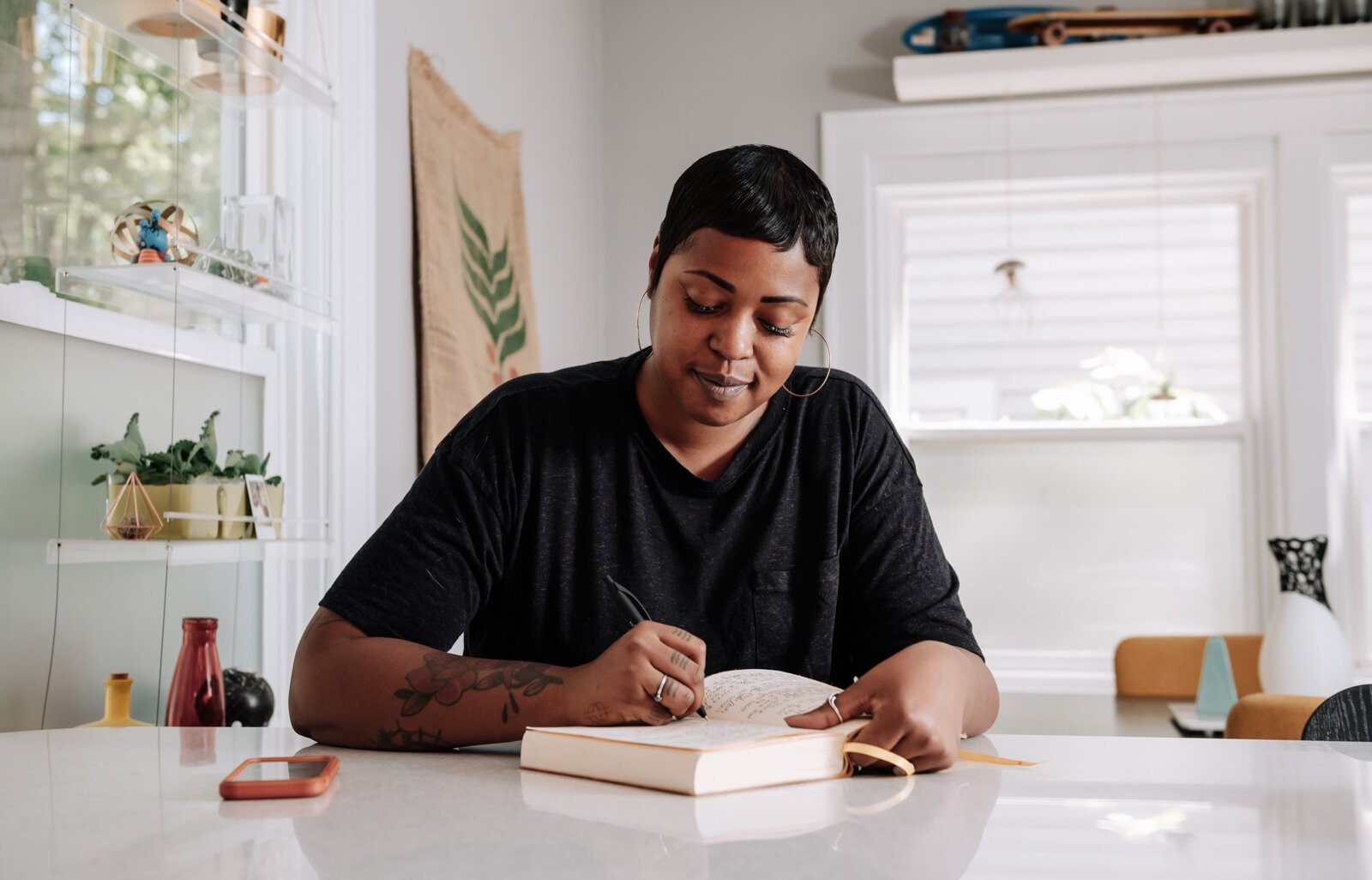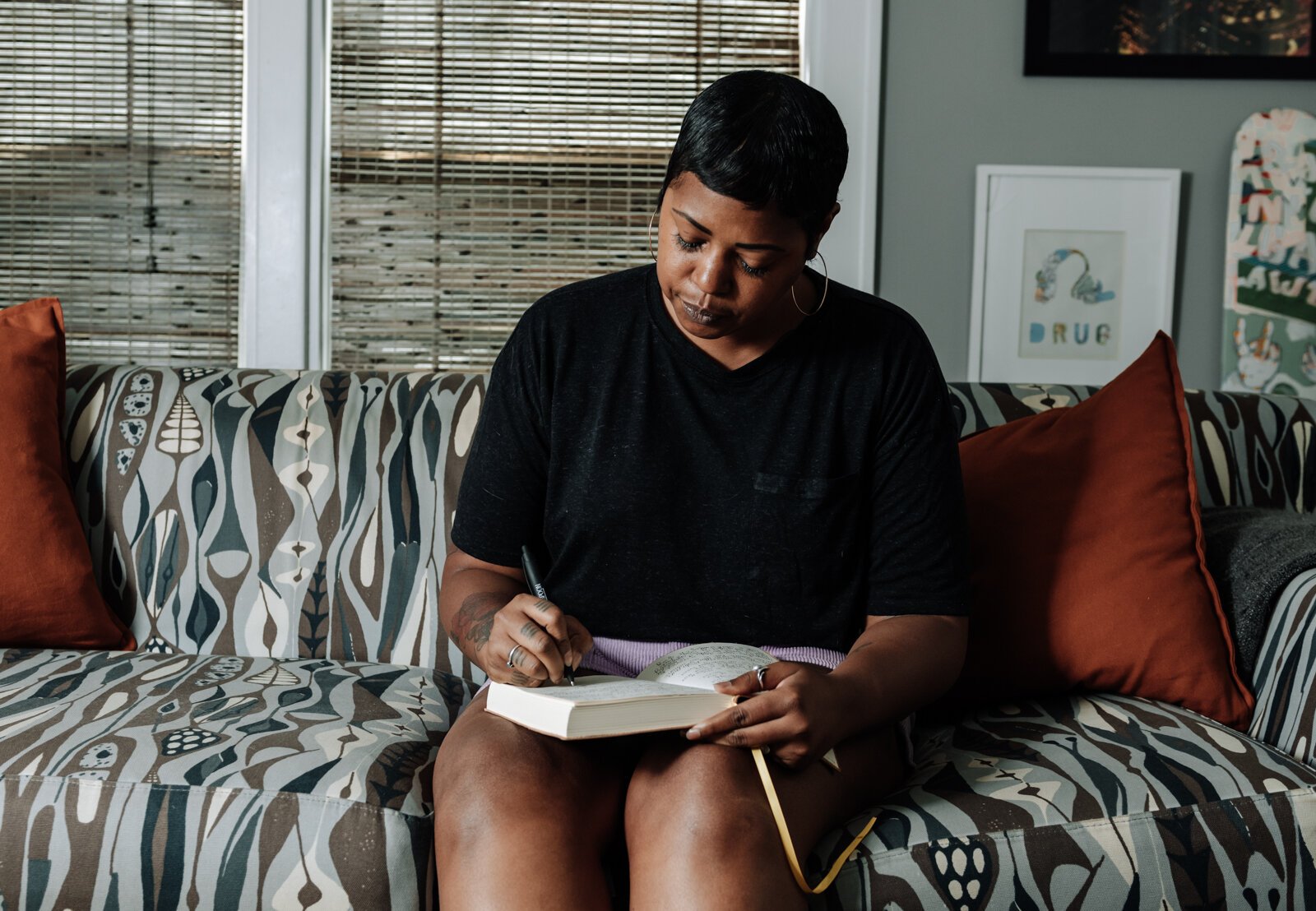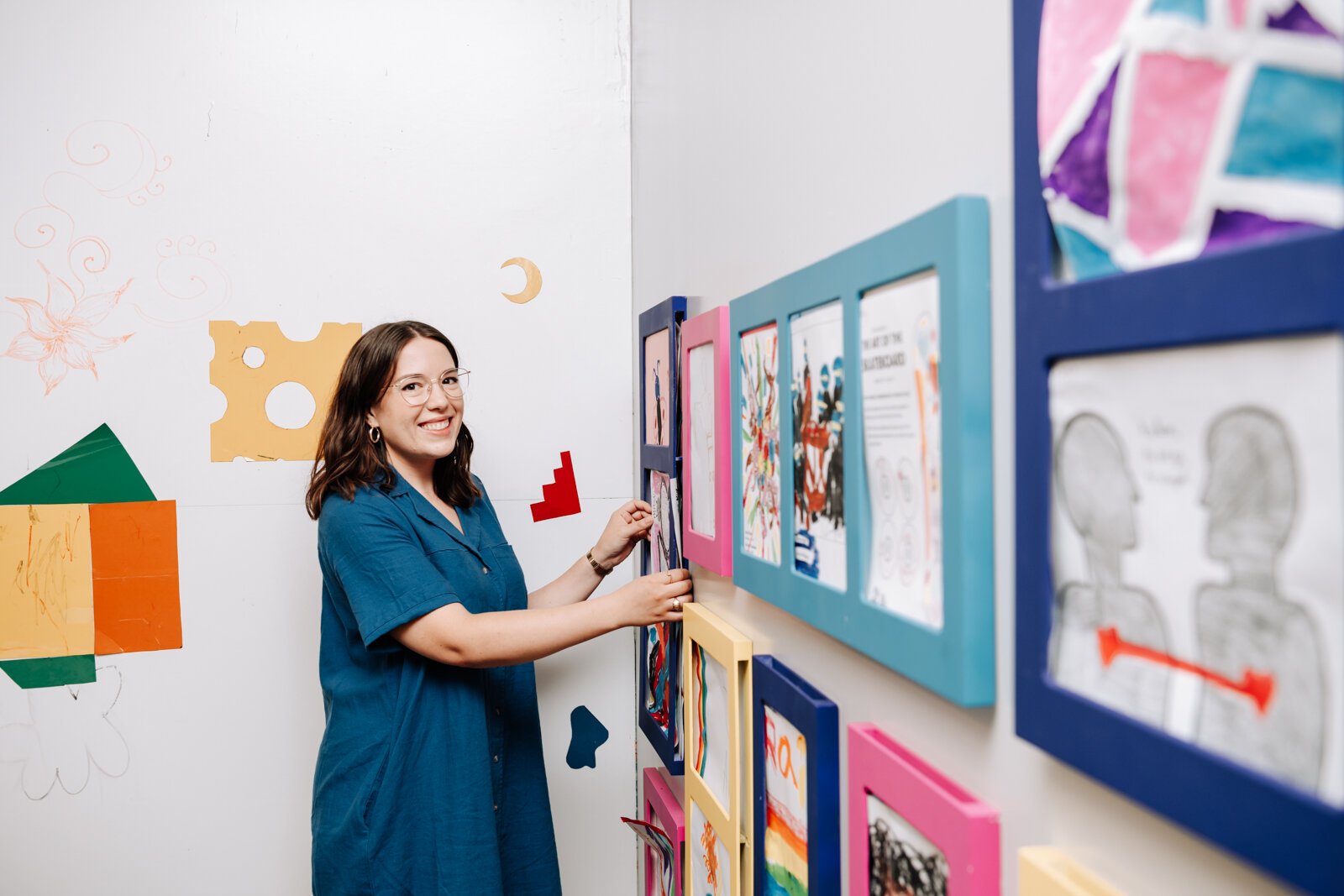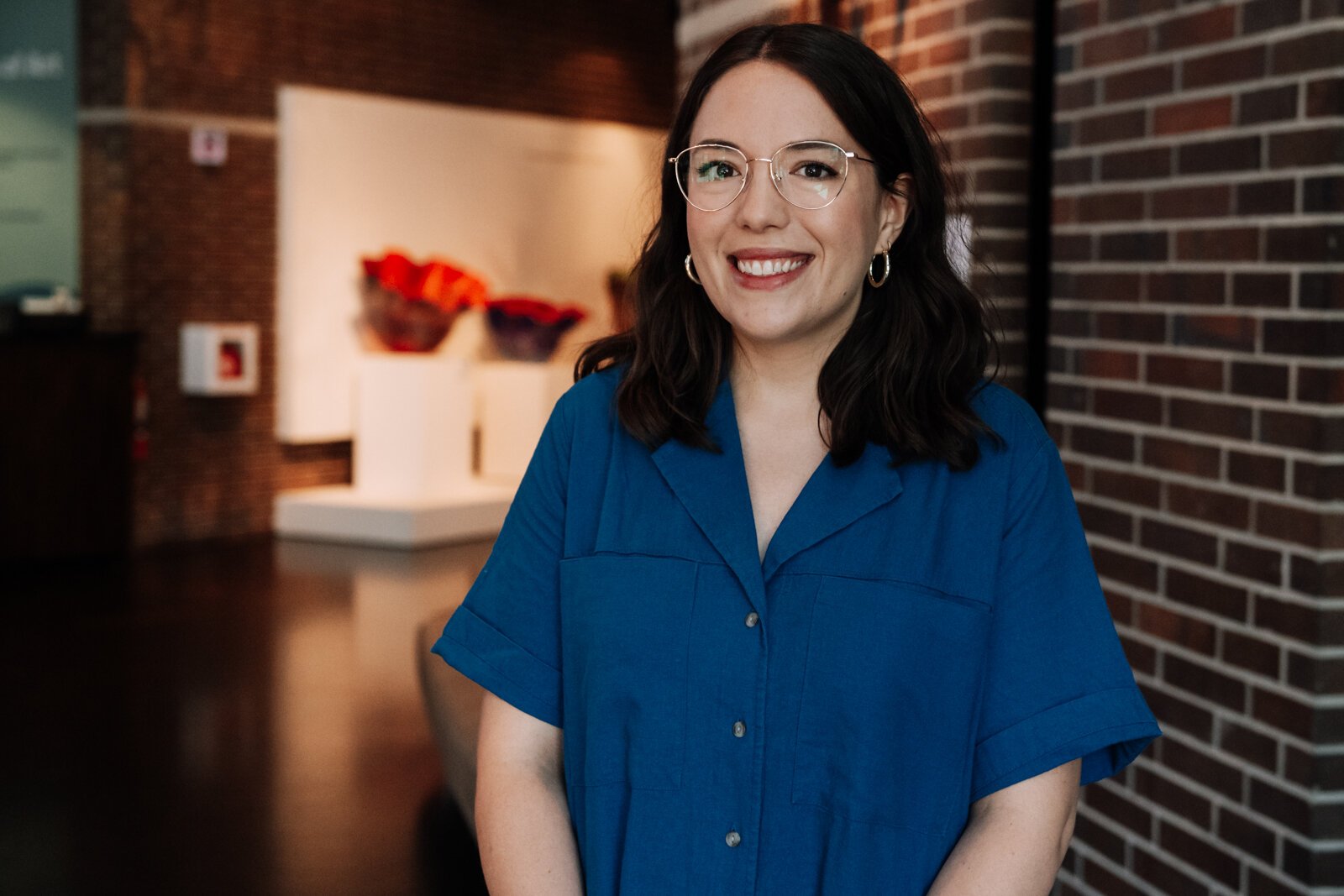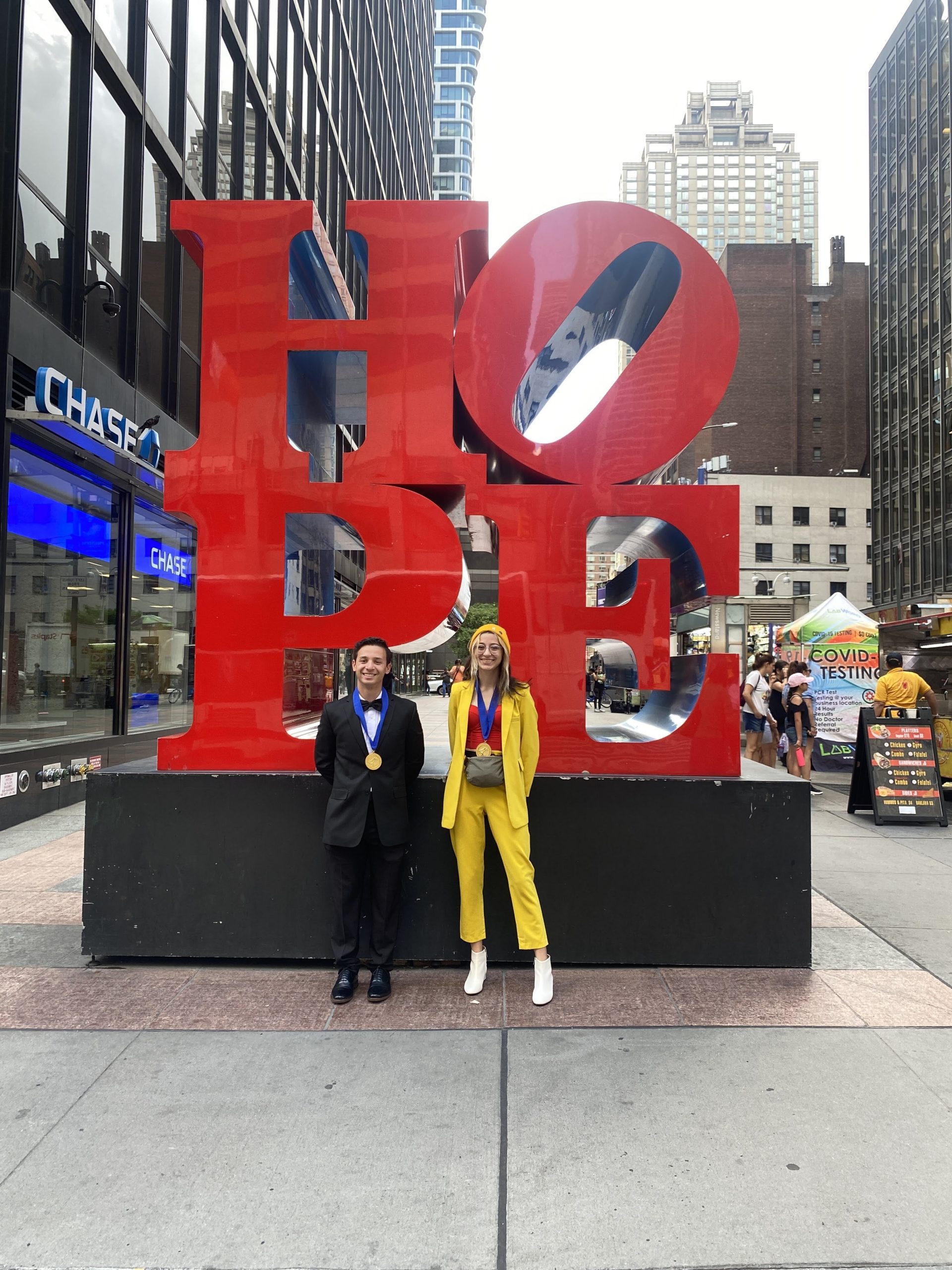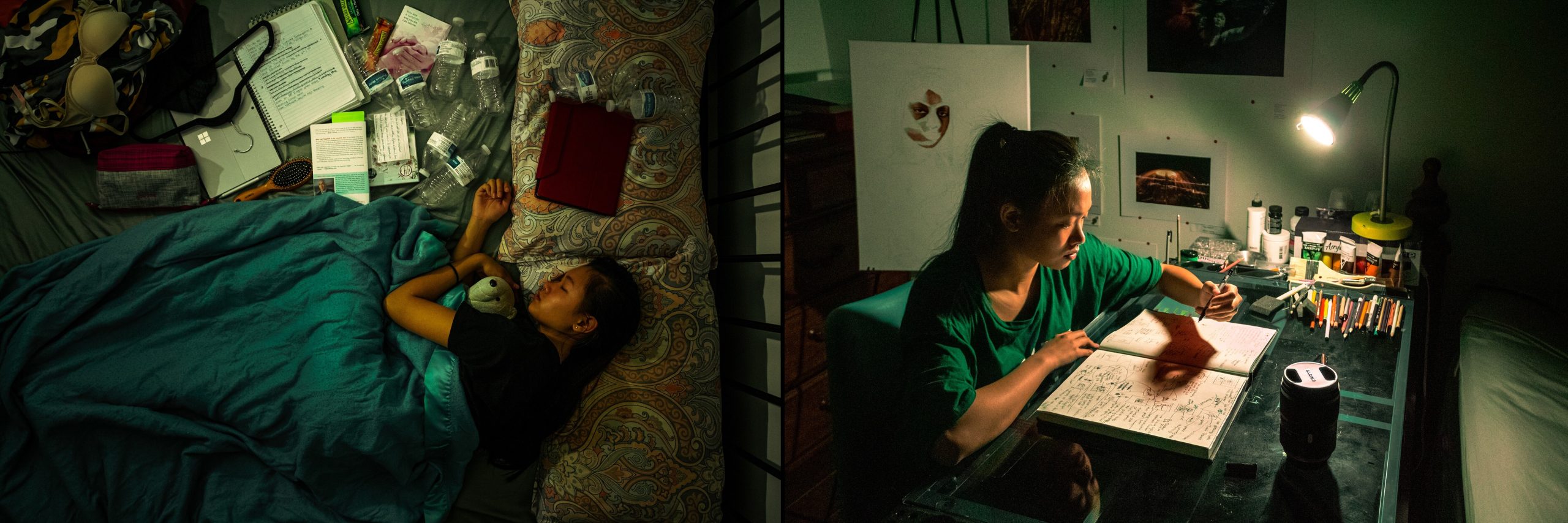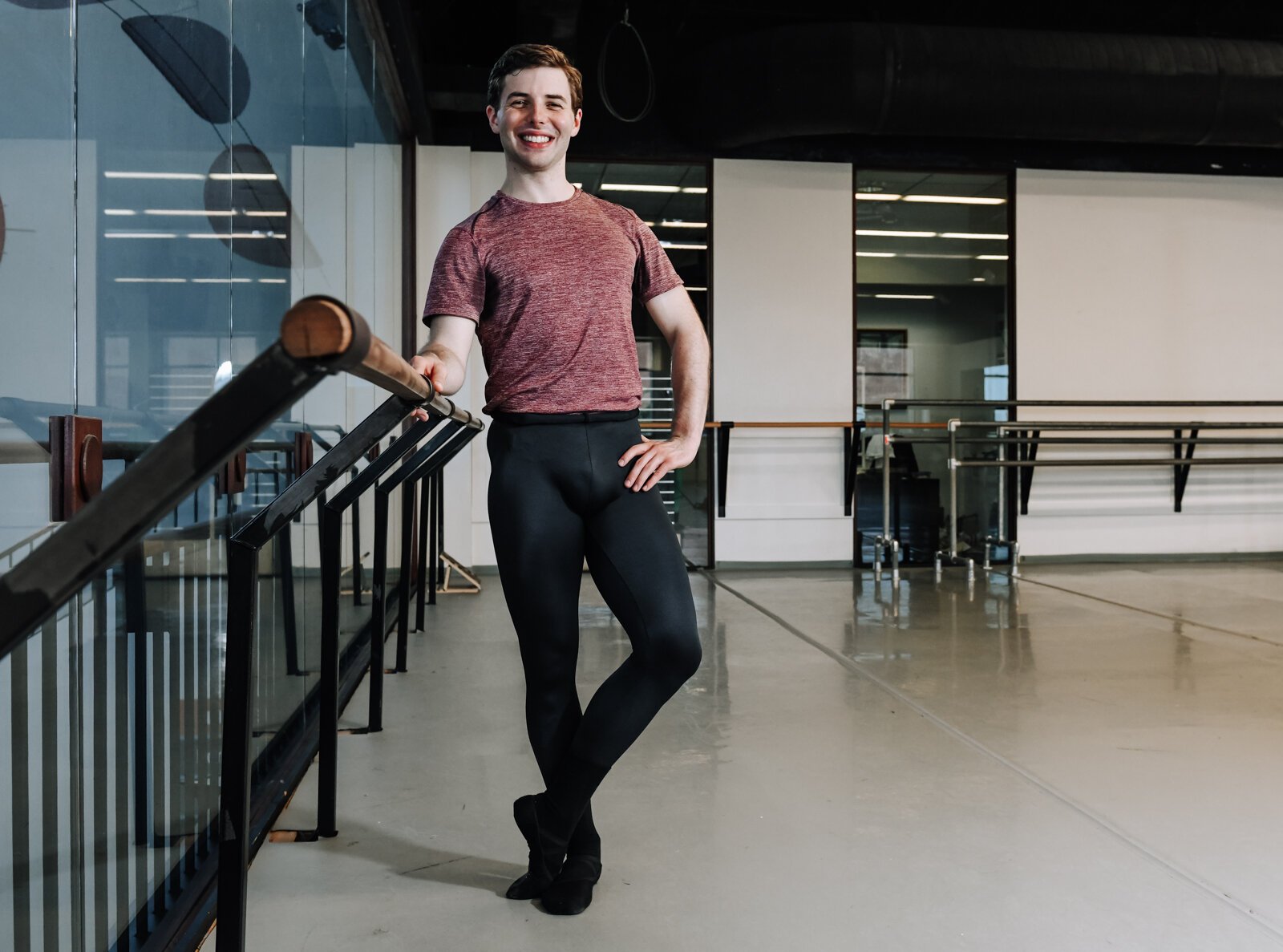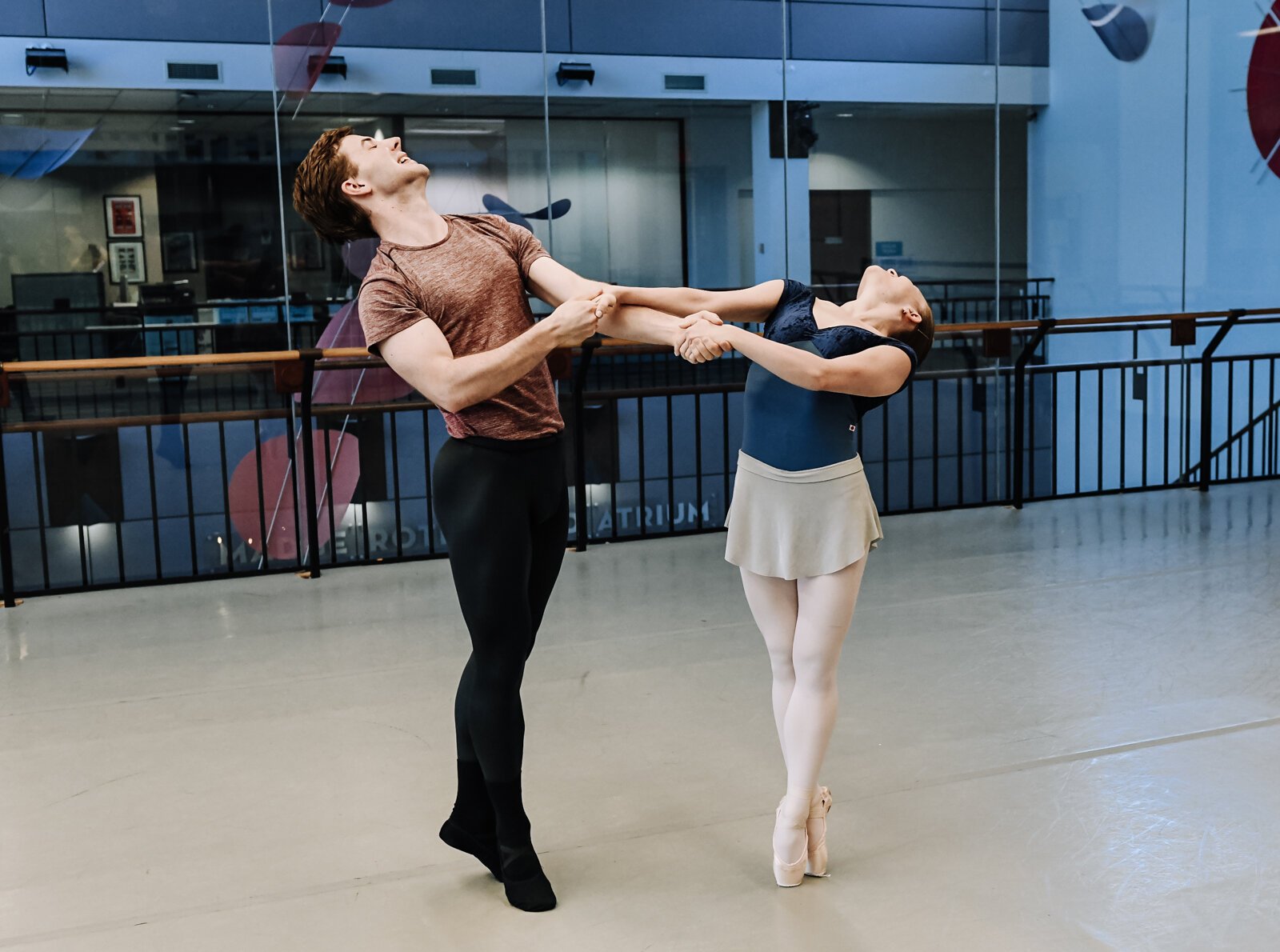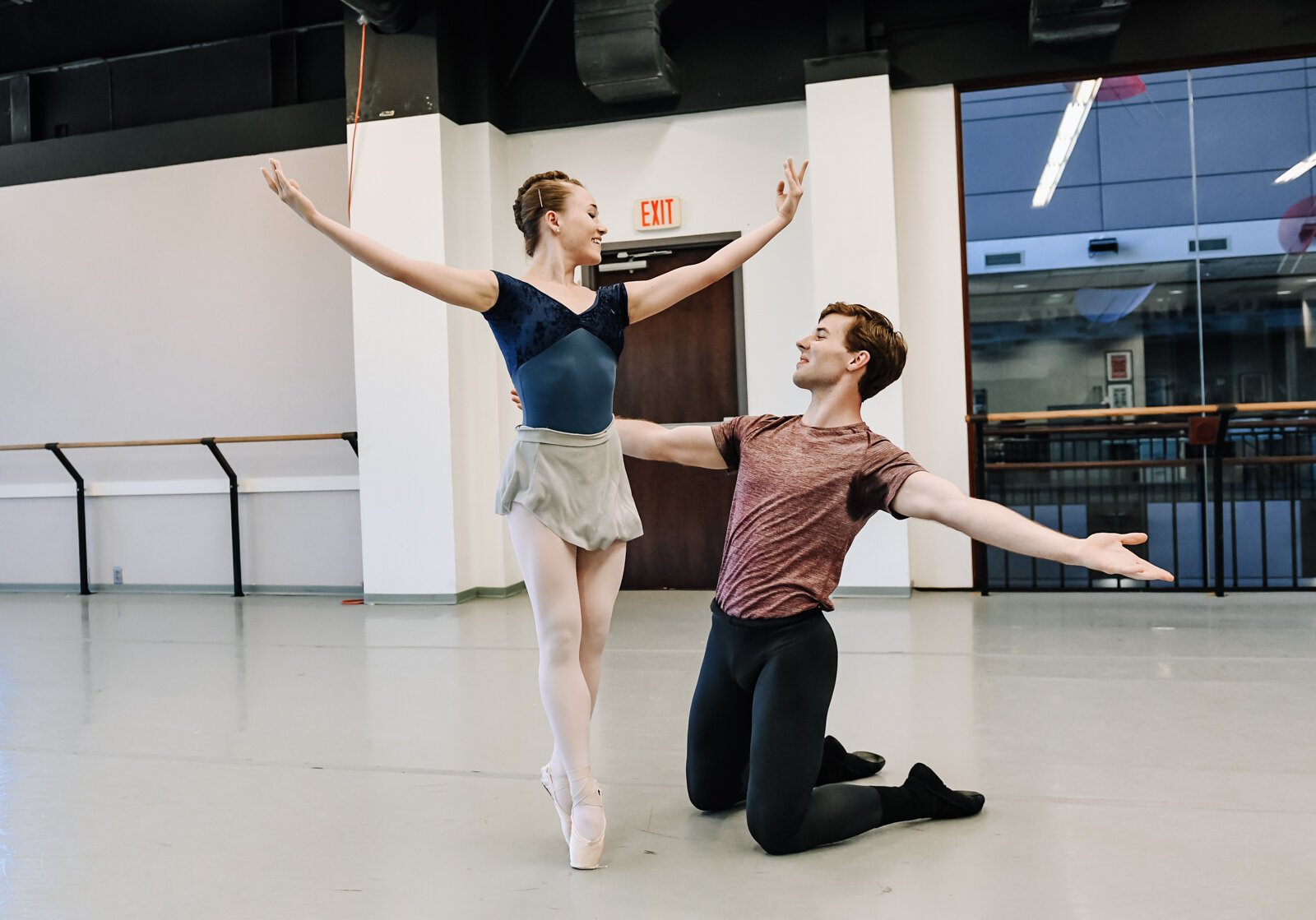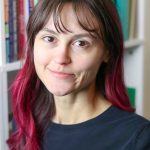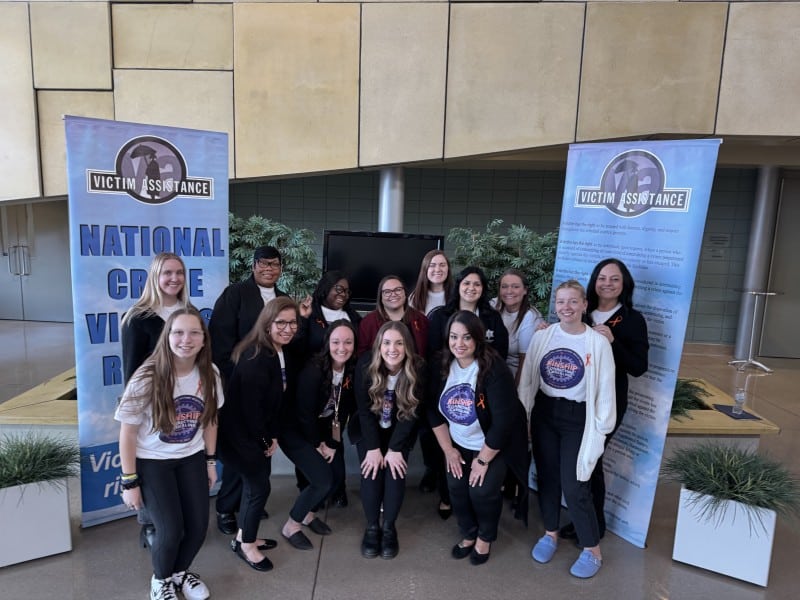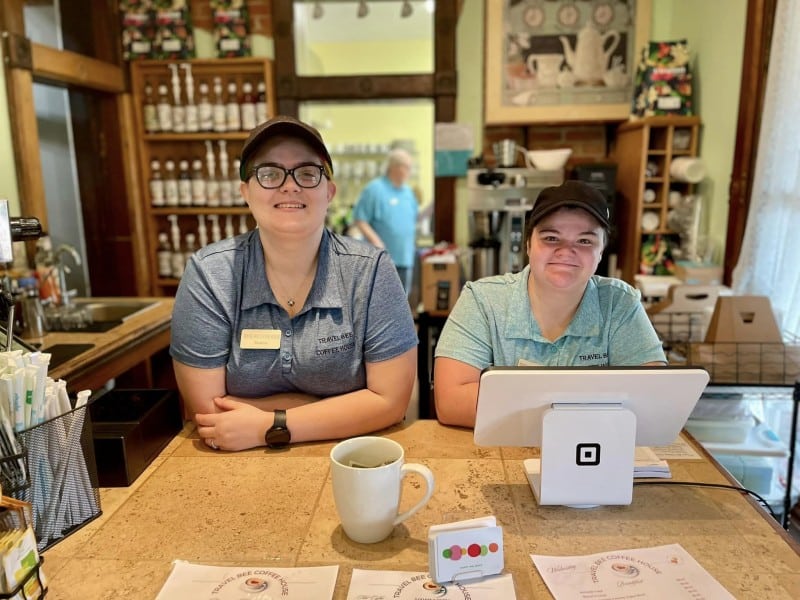How is Fort Wayne fostering a creative economy?
Arts education, creative spaces and programming, and entrepreneurship play a role.
When you think about Fort Wayne’s economy, you might think of the largest industries in Indiana, like manufacturing or healthcare.
About halfway down the list of most common employment sectors, you’ll find the creative sector, trailing just behind construction and transportation.

It’s a growing sector. From 2010 to 2015, there was a 5.6 percent increase in the number of creative occupations in Indiana, according to the IPFW Community Research Institute. Northeast Indiana is home to more than 18,800 creative jobs, and Allen County holds almost 8,000 of those jobs as of 2020. Creative occupations are defined as those focused on the production and distribution of cultural goods, services, and intellectual property, which is measured by the Standard Occupation Classification. That means this data does not include other arts-oriented work being done by corporations, like Sweetwater or Vera Bradley.
Photographers are the most common creative occupation in both Indiana and Allen County. Allen County is home to 825 photographers, according to the Indiana Arts Commission’s Creative Vitality Suite 2020 Data. Following just behind, the second most popular creative occupation is musicians and singers, with 718 in the county. Then writers and authors, graphic designers, and marketing managers hold the third, fourth, and fifth positions, respectively.
Creative occupations with the most growth between 2019 and 2020 are marketing managers, fine arts (painters, sculptors, and illustrators), merchandise displayers and window trimmers, journalists (reporters and news analysts), and lighting technicians or media/communication equipment workers.

Creative industries with the greatest earnings in Allen County are wired telecom carriers, architectural services, commercial gravure printing, advertising agencies, and television broadcasting.
Allen County is home to a number of creative nonprofits, as well. The most common is singing and choral groups, followed by historic societies and historic preservation, fairs, theatres, and humanities.
Along with the economic benefits, a thriving creative community can heavily influence a city’s atmosphere, culture, and talent attraction abilities. As a member of Fort Wayne’s creative sector, writer Shanel Turner recently left a job with a local arts organization to pursue her creative career independently here. She does screenwriting and creative writing.
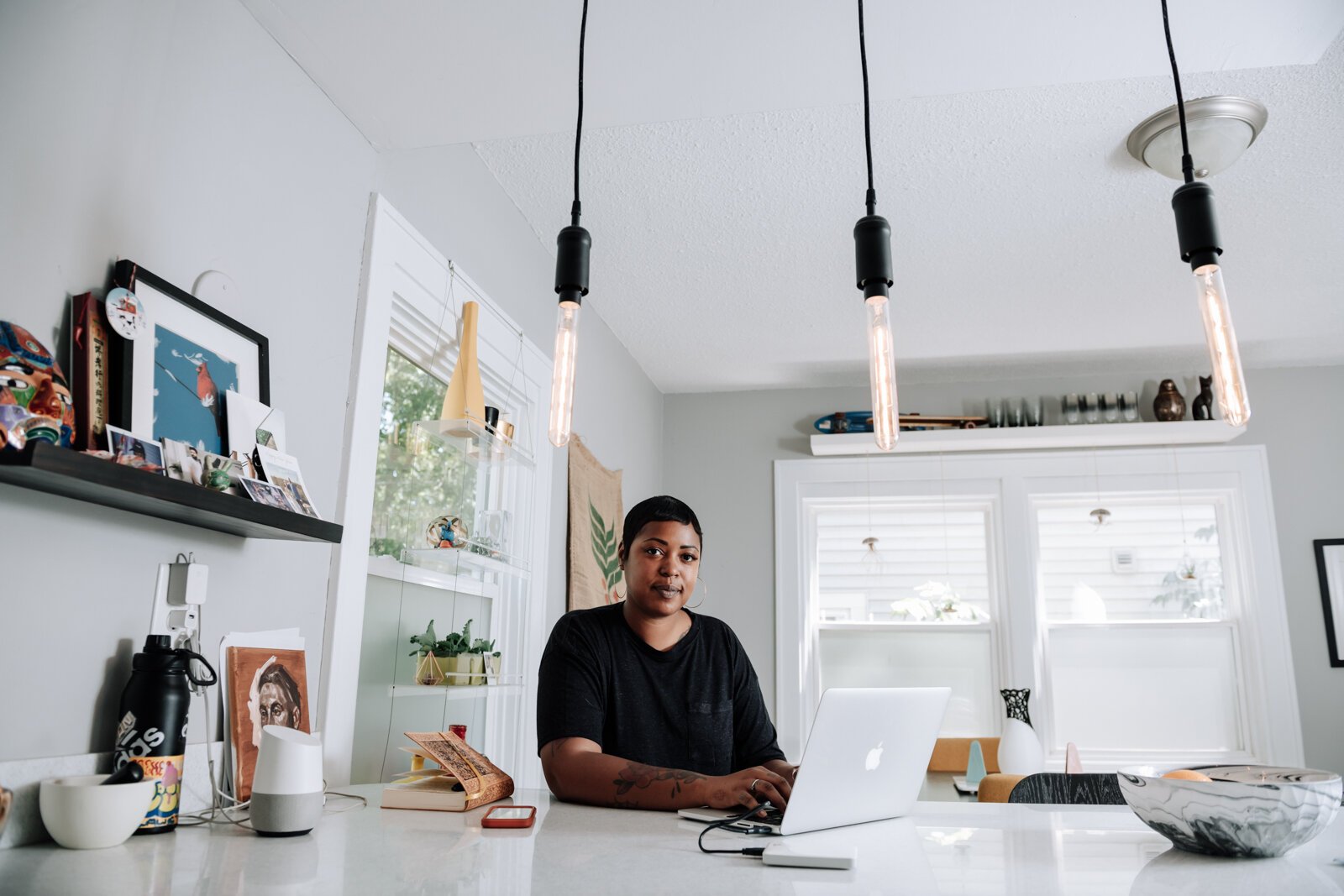
Turner describes Fort Wayne’s arts and cultural organizations as the lifeblood of the community. She grew up here, attended the Art Institute in Pittsburg, and has experienced the creative sector of many communities.
“A city is not a city without arts and cultures,” she says.
When it comes to the talent driving Fort Wayne’s creative community, Turner says she’s impressed.
“I’ve been to a lot of places, and Fort Wayne is home to some of this nation’s best creatives,” she says. “Like when it comes to tattoo art, when it comes to writing, when it comes to poetry, when it comes to filmmaking, or the music scene around here; it’s just insane.”

In recent years, Fort Wayne artists have made names for themselves nationally, like Lyndy Bazile of AfroPlump, Theopolis Smith of Phresh Laundry, and Sankofa the rapper.
Having talented artists invested in a community contributes to shaping its culture and opportunities. But a healthy creative economy isn’t confined to replicating rockstar talent or making a community more attractive for artists exclusively; more fundamentally, it’s about creating an environment conducive to creative thinking, living, and expression in many forms.
So what’s happening in Allen County to help the creative economy flourish? We explore how the community is developing opportunities for arts education, creative spaces and programming, and creative entrepreneurship.
Engaging youth in the creative sector through arts education
Various programming in Fort Wayne allows for students to be introduced to art at a young age, to keep growing creatively, and to learn from professional creatives in the field.
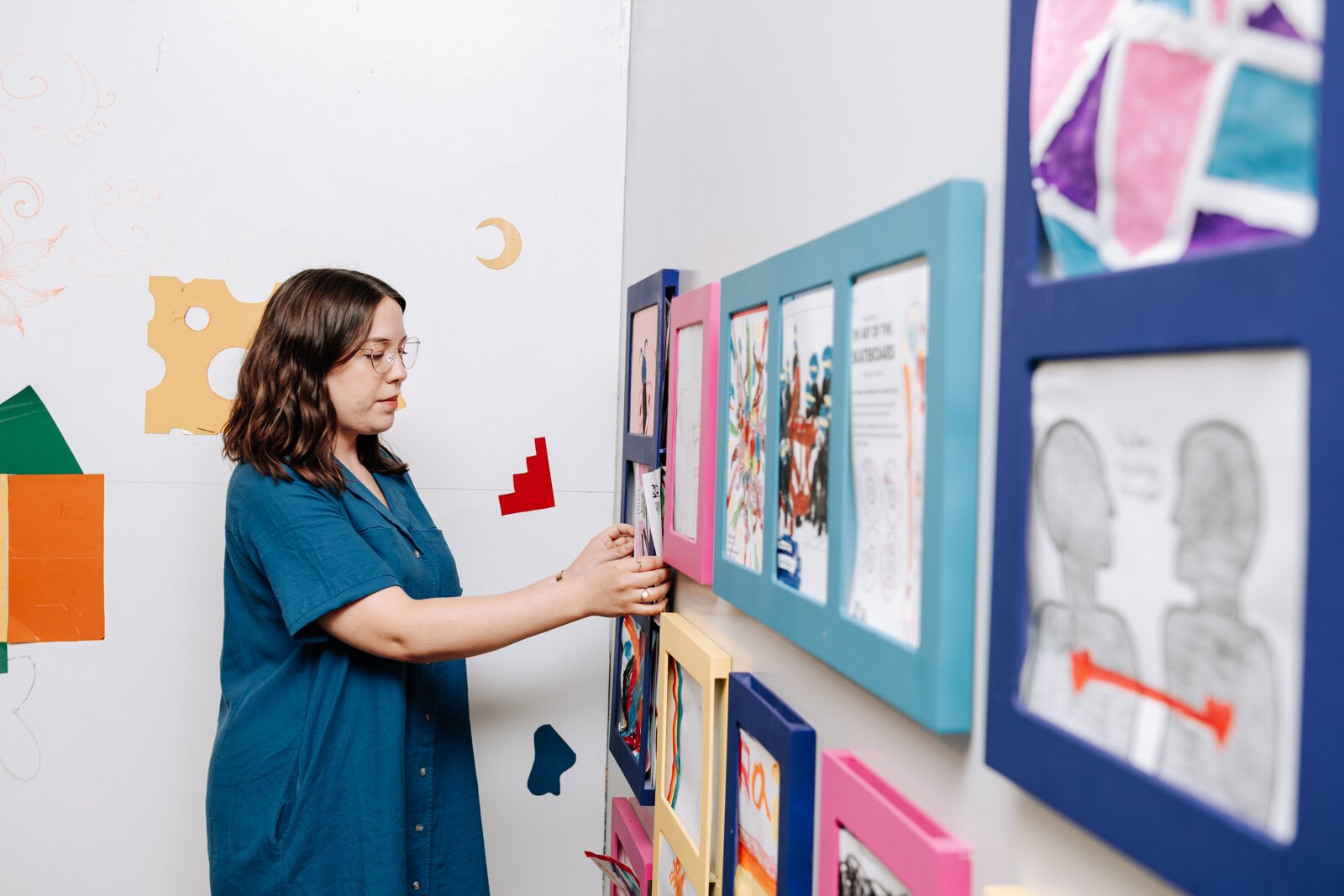
The Fort Wayne Museum of Art offers programs for children as young as preschool that pairs artwork from its collection with class books and art activities. As part of these programs, students get to visit the museum, too.
The FWMoA also offers school tours and a gallery on wheels, which brings artwork to students in their classrooms. It provides supplemental educational materials for teachers to go along with these visits, as well.
As Director of Education for FWMoA, Alyssa Dumire says the program with the widest reach is the Scholastic Art & Writing Awards. This program is part of a national organization focused on students in grades 7-12, which “highlights the exemplary originality, technical skill, and emergence of personal voice and vision of Northeast Indiana teens.”
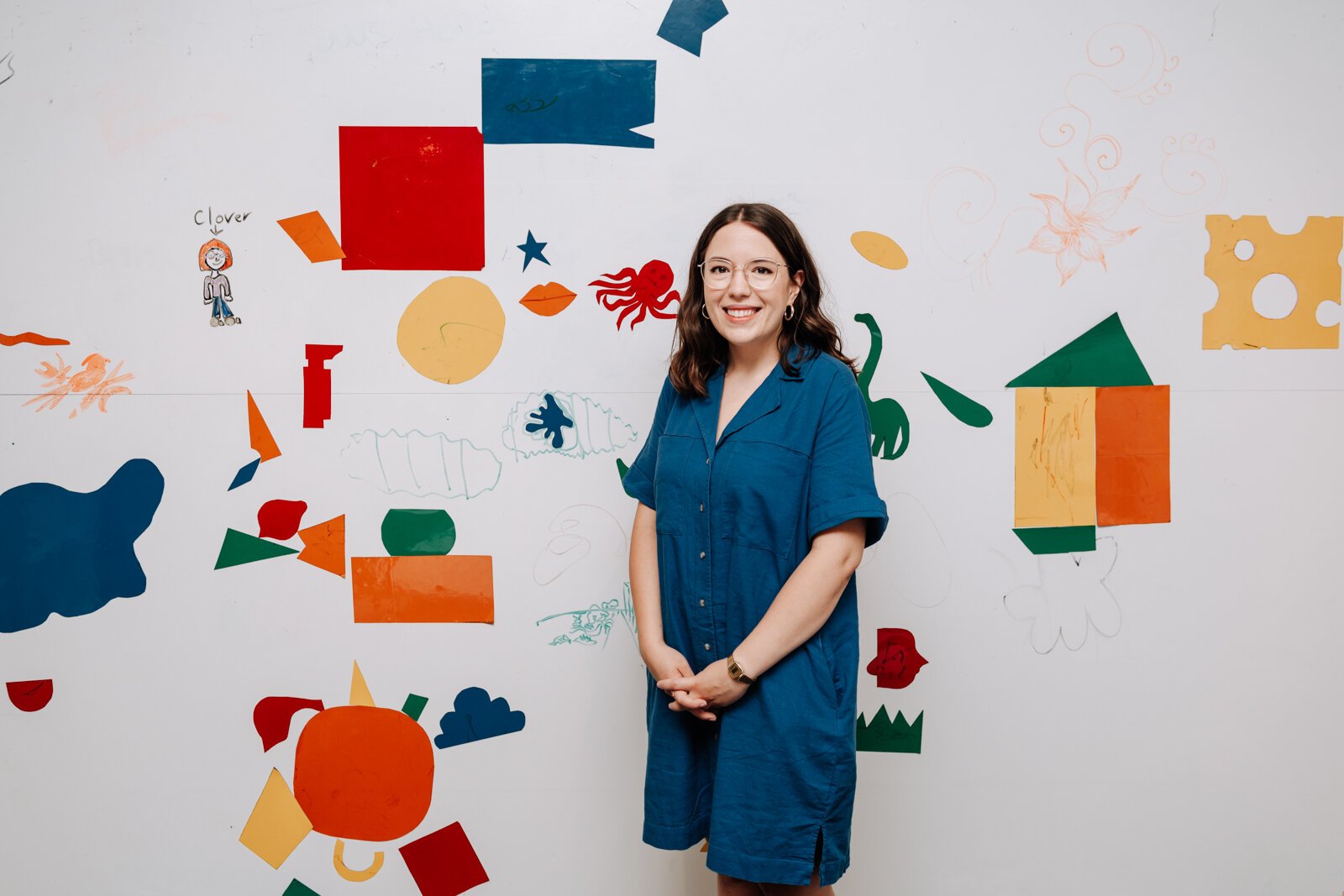
Through Scholastic, students can earn national awards and recognition for their creative works, which are also displayed at the museum locally for a few months. Sumire says Scholastic gives students exposure and knowledge that there are possibilities in the creative field both in Fort Wayne and beyond. It helps them see how their work compares nationally and gives them the confidence to apply for further opportunities, too.
For instance, during Bishop Dwenger High School graduate Seth Boyden’s senior year of high school in 2011, his portfolio of animated films earned him a top 10 placement in the Scholastics Awards nationwide. He went on to be a Storyboard Artist for Blue Sky Studios in New York, which produced the “Ice Age” movies.
This year 22 National Medals were awarded to students in the region. Jared Sagan, a senior at Homestead High School, was one Fort Wayne student awarded a National Medal. His work was an agamograph, meaning it’s two drawings in one, and it changes depending on how it’s viewed.
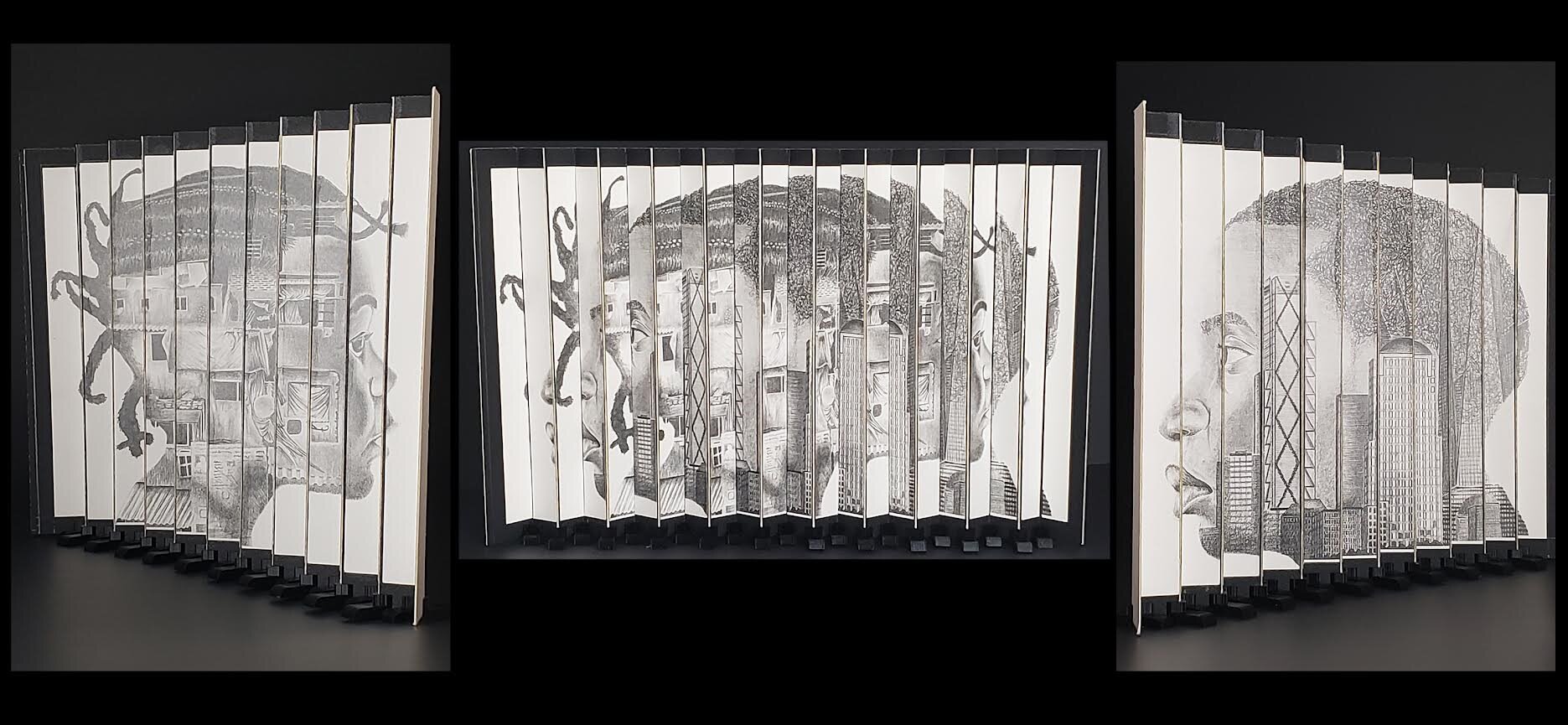
Last year, Alyvia Luong, a senior at Carroll High School at the time, won a Silver Medal with Distinction and a Gold Medal for her portfolios. A Gold Medal is the highest honor given at the Scholastic Awards and was only given to 16 students nationally. Luong received $11,000 in scholarships for her portfolios and currently attends the Art Institute of Chicago.
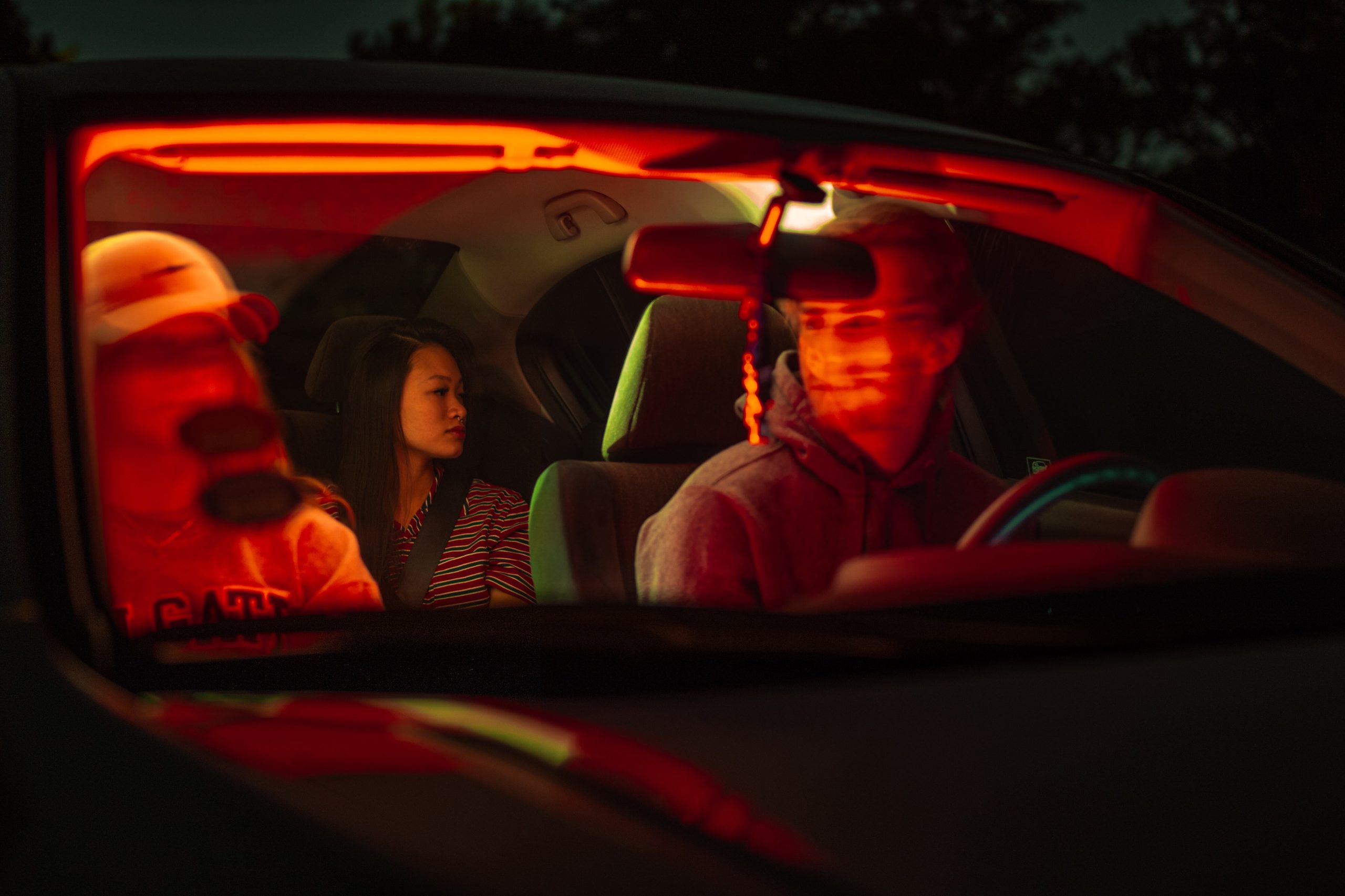
Dumire says the connection these programs give students is important, too. She participated in Scholastic during her time at Carroll High School and now displays her art on a shelf in her office at the museum. While she started college as a medical technology major, she ended up switching majors to art education and art history.
“I was always kind of interested in science and STEM and thought that it had a really good, clear career path,” she says. “But I realized I would really miss art if I didn’t do something like that. I had some great art teachers who encouraged me.”

Talbot Rue had a similar experience connecting with the arts in his youth. He started taking ballet classes at the age of 12 and is now a dancer in this third season with the Fort Wayne Ballet.
“The company was way smaller back when I was in high school,” says Rue. “I got to do a lot of performances with the company here. I got to be involved.”
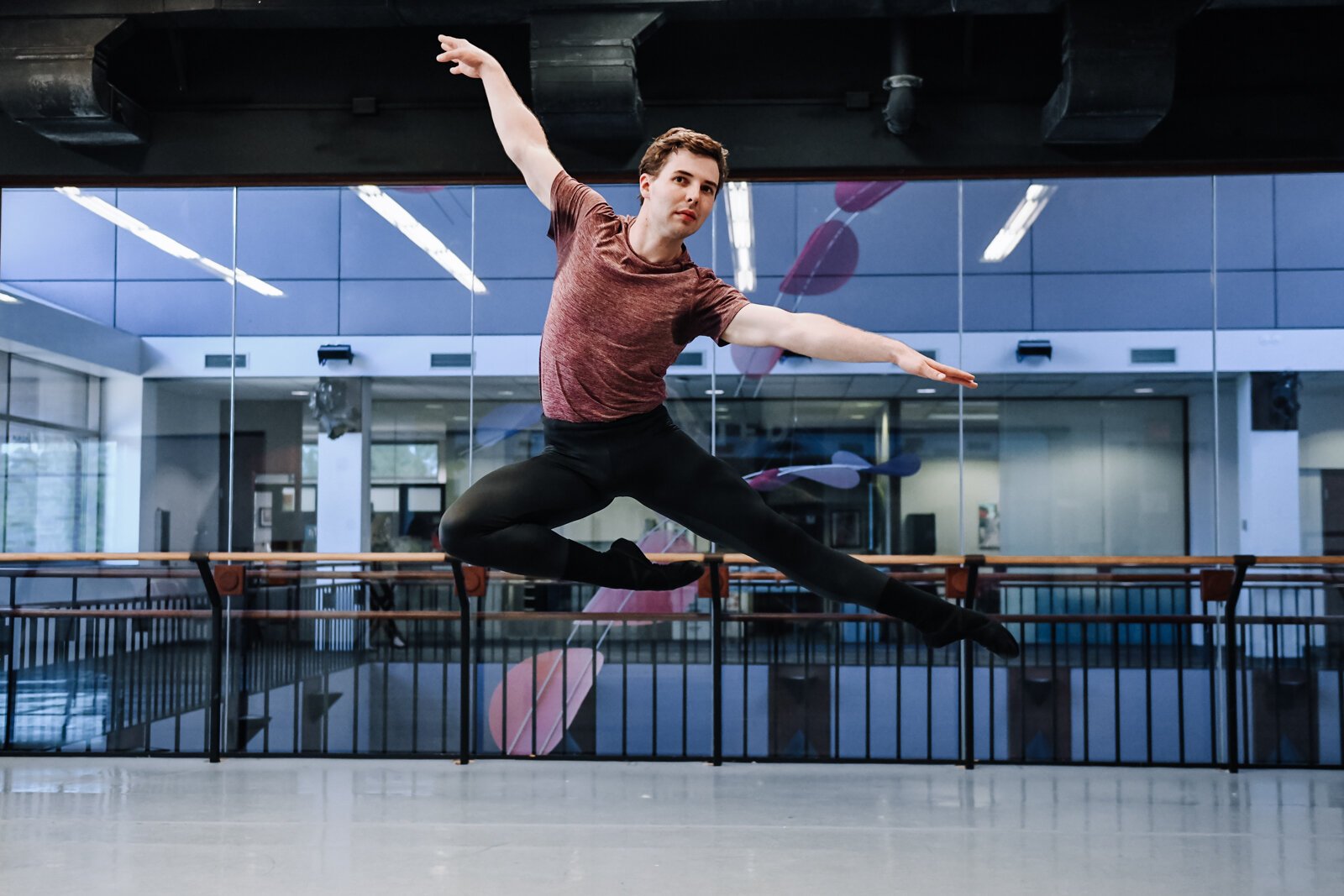
It was the connections and experiences he had in his youth that encouraged him to move back to the Fort Wayne Ballet after dancing with the Richmond Ballet and the Nashville Ballet.
He says it’s been great to watch the company grow over the years, too. The Fort Wayne Ballet is Indiana’s longest-standing professional ballet company. It teaches more than 300 students of all ages and reaches over 13,000 people annually through its performance. Notably, the Ballet also found ways to help residents stay creative amidst the COVID-19 pandemic.
Another aspect Rue says he enjoys about dancing with the Fort Wayne Ballet is its location. The Fort Wayne Ballet is located on the Arts United Campus in Downtown Fort Wayne. He says the campus allows him and the other dancers to be connected to what’s happening Downtown, especially other creative ventures, like The Fort Wayne Museum of Art and the Civic Theatre.
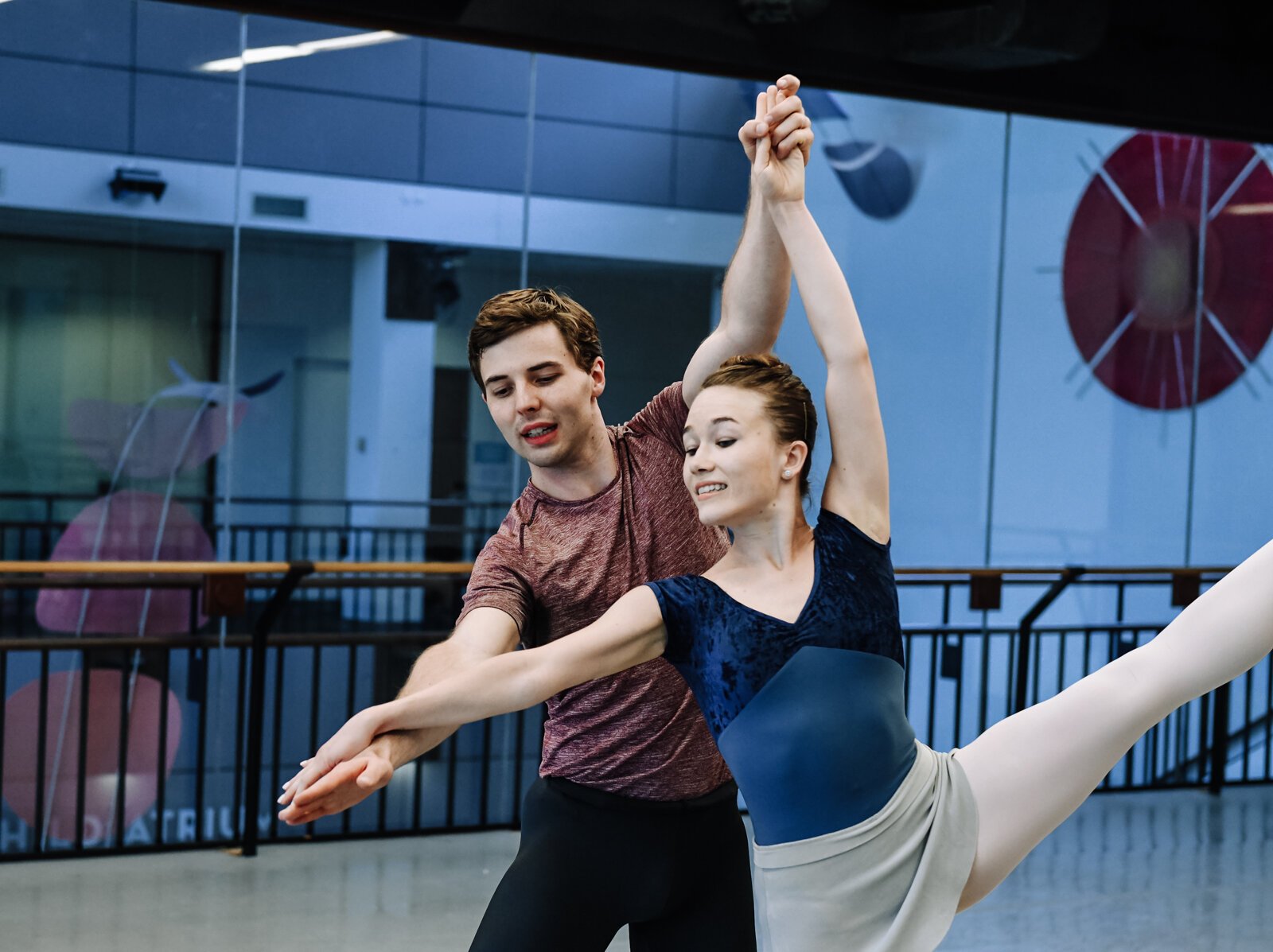
In his free time, Rue also works as an usher for Arts United’s Theatre, which means he sees many of the Civic Theatre productions.
“I’ve always liked watching plays,” says Rue. “One of the reasons I wanted to do the ushering job was because you get to see all of what Fort Wayne has to offer, all these different shows.”
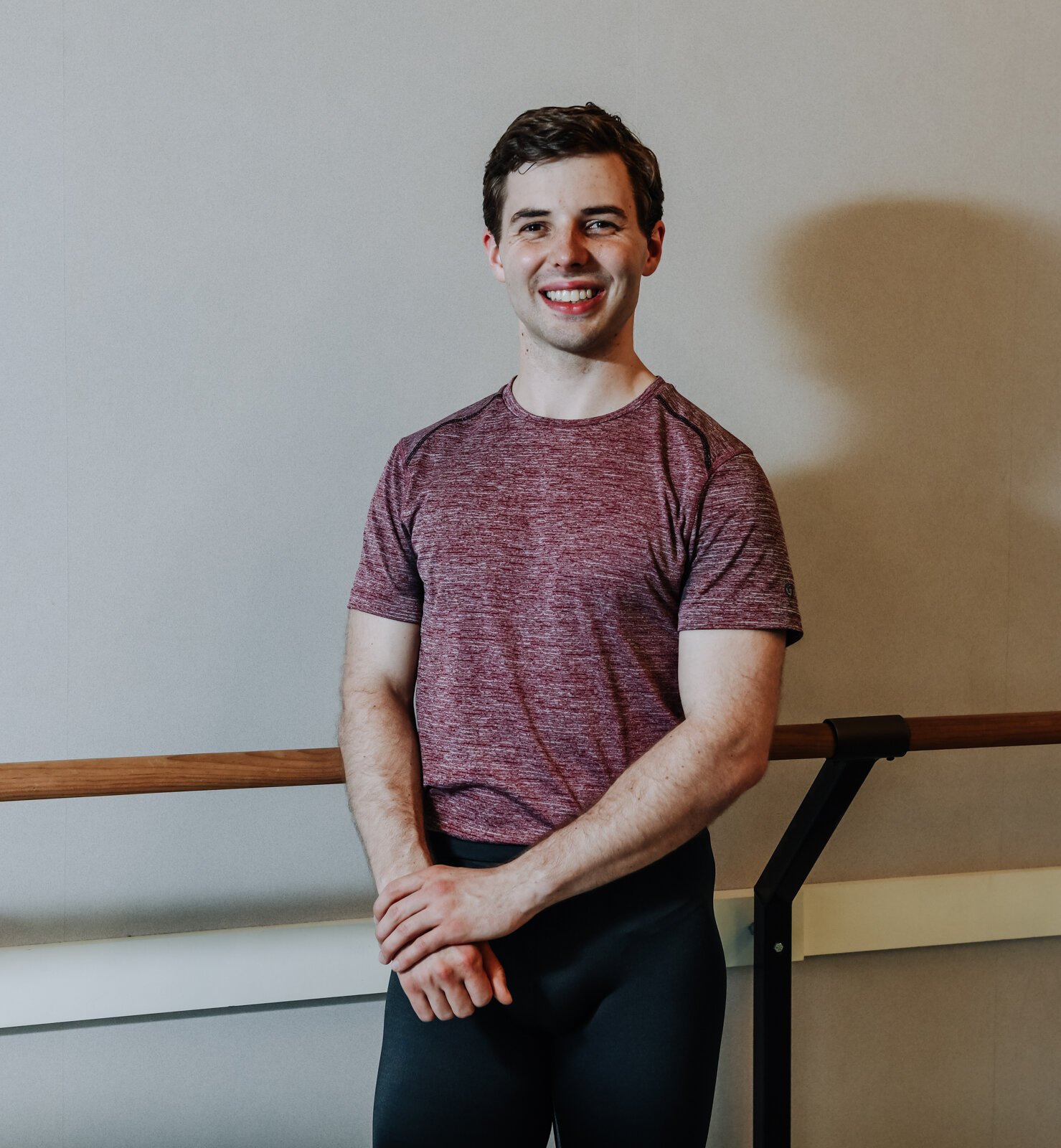
This connectivity is another key aspect of what it takes to enhance a city’s creative economy: The physical environment.
Increasing creative spaces and programming
Many of Fort Wayne’s creative programs and venues are centrally located Downtown, and it’s not a coincidence. Instead, since 1955, Arts United has been working to develop the Arts Campus Fort Wayne into a hub of creative activity.
Susan Mendenhall, President of Arts United of Greater Fort Wayne, says having centrally located creative programming is a key component of success for the city’s cultural district and can help draw in creatives throughout the region.
The Arts United Center, a 660-seat theatre, opened in September of 1973. Its building was designed by world-famous architect Louis I. Kahn and was his only completed commission in the midwest.
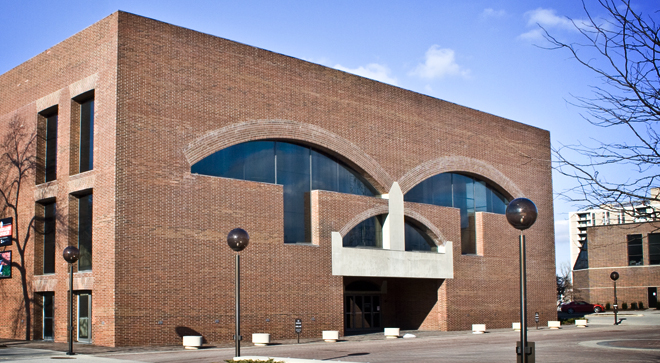
Khan once said, “These organizations of the arts, when they come together to be a single-center – does it mean that something new is born? … I realized that it does, simply by their being together rather than apart.”
Mendenhall says this philosophy has impacted how the Arts Campus has developed over the past six decades and impacted Arts United’s approach to supporting the arts and cultural ecosystem in the greater Northeast Indiana region. In recent years, these efforts are paying off. In 2021, Fort Wayne earned a Cultural District designation from the Indiana Arts Commission (IAC). The IAC defines each cultural district as a “well-recognized, labeled, mixed-use area with unique, authentic art and cultural identity.”
Fort Wayne and Wabash received their designations in the same year. They are two of the 12 designated cultural districts in the state.
Fort Wayne’s district is comprised of seven venues; Arts United Center, Auer Center for Arts & Culture, Fort Wayne Museum of Art, Hall Center, History Center, Parkview Physicians Group ArtsLab, and Rankin House. There are also 17 resident and presenting organizations that are located on the Arts Campus or offer programming on the Arts Campus. This includes Arts United, Fort Wayne Museum of Art, Fort Wayne Ballet, Fort Wayne Civic Theatre, Cinema Center, Artlink, and more.
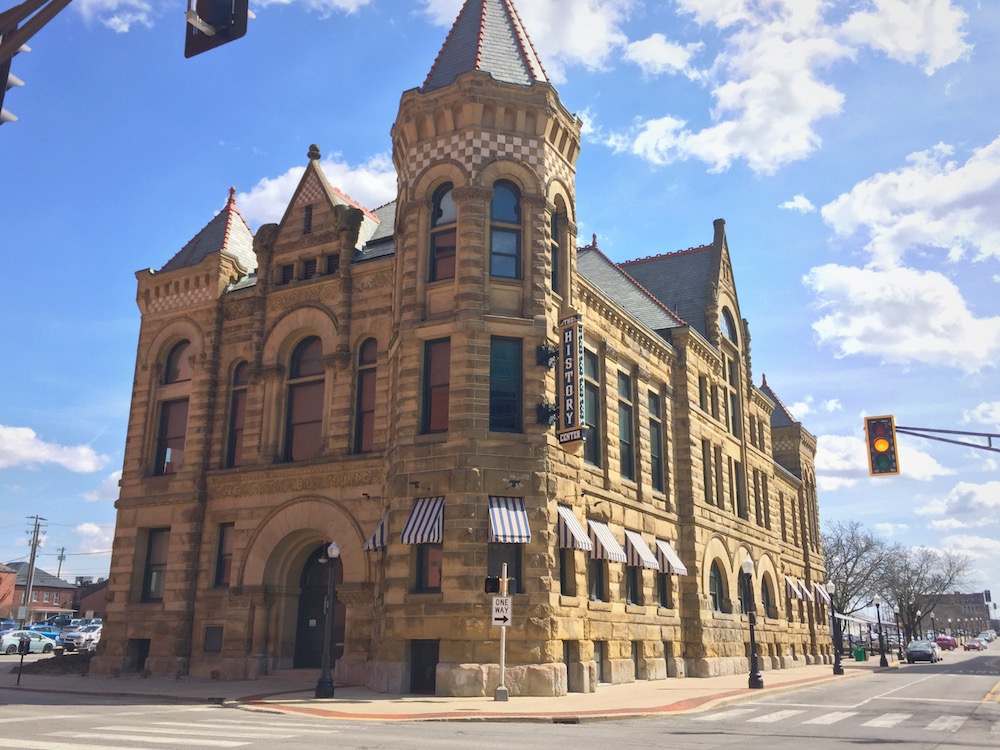
“The designation of the Arts Campus as a cultural district demonstrates our community’s long-term commitment to planning and investing in the active presence of arts and culture in our region’s urban core,” says Mendenhall.
There are economic benefits to clustering arts organizations and amenities in cities, as well as creating opportunities for people to make a night or an afternoon of an arts experience and support the community in multiple ways.
“There is a reason why ‘dinner and a show’ is a cliche,” Mendenhall says. “According to Americans for the Arts, the average arts patron spends $31.47 per person, per event, not including the cost of admission, on dining, retail, transportation, hotels, and childcare–discretionary spending that stays local.”

Much of Fort Wayne’s creative economy is connected to the Arts Campus in some way, and the dense population of creative programming and organizations makes Downtown a hub for creative jobs. The proximity of the Arts Campus to other Downtown attractions, such as the Landing, Riverfront, the trail system, and Art This Way alleyway murals supports a vibrant urban core where more residents can access the arts, says Mendenhall.
Encouraging creative entrepreneurship
A portion of the creative economy is driven by individuals who are not on the payroll of a nonprofit or creative organization, but rather own their own businesses or work as independent contract employees.
Creative entrepreneurs make up 40 percent of all employment in creative industries in Indiana as of 2016, according to the IPFW Community Research Institute. Turner is one local example. She says taking the leap to work independently in recent months has been scary, but it gives her to freedom to hyper-focus on the projects she feels most passionate about.
Some creatives might have a knowledge gap when it comes to switching from being an employee to owning their own businesses or freelancing, making it more challenging to make the jump to working for themselves. Arts education and training doesn’t typically come with business training.
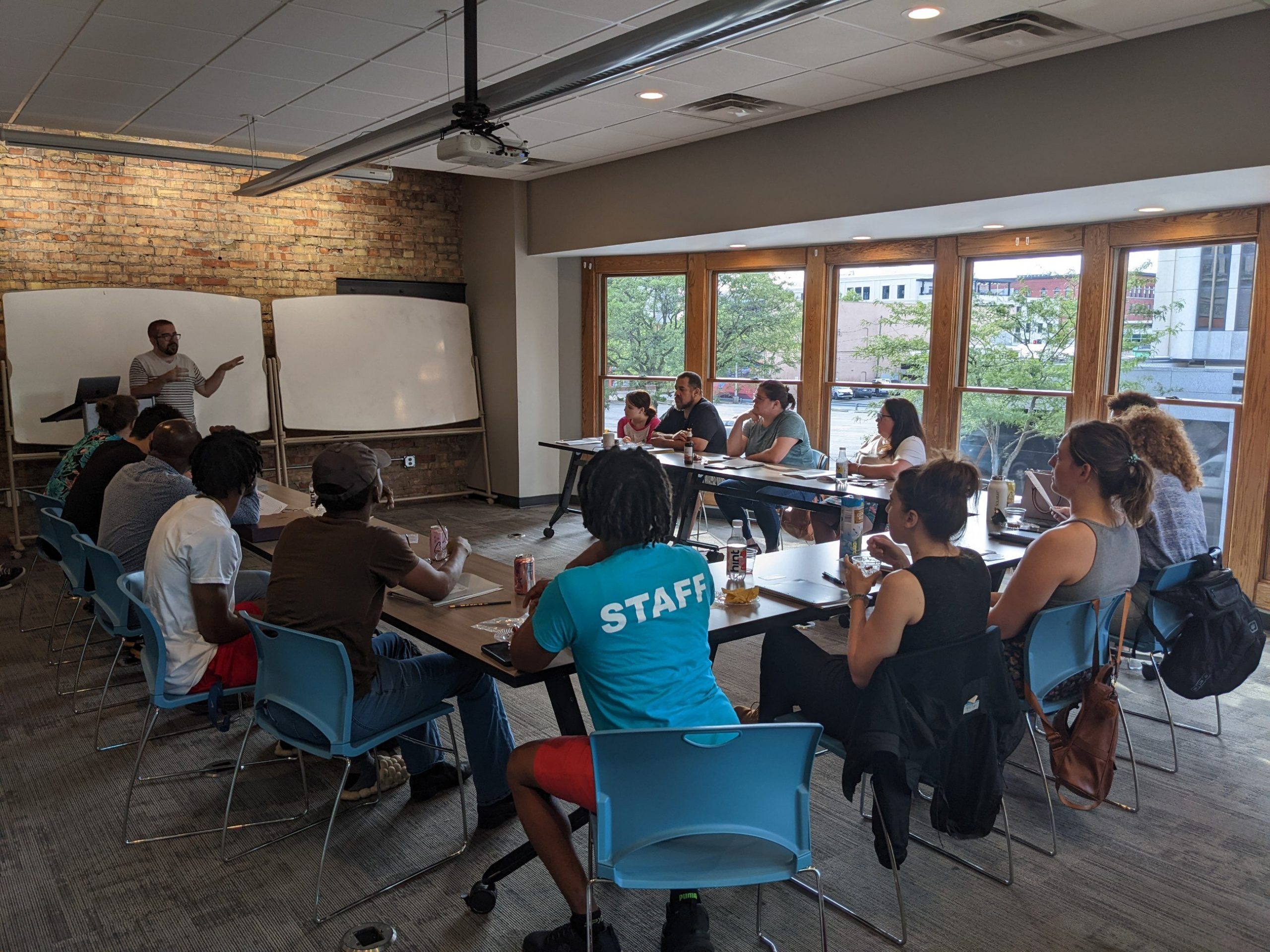
One Fort Wayne initiative aimed at supporting creative entrepreneurs is Creative Assembly. It’s a cohort-based, entrepreneurial training program that’s a collaboration between the Indiana Arts Commission, Arts United of Greater Fort Wayne, Start Fort Wayne, and The Hedge Studios. The program is intended to give participants basic information to turn their creative pursuits into sustainable businesses, while also giving them a playbook to generate revenue and understand their product-market fit.
The first cohort was announced in June. Among the 15 participants, their businesses include animation, pottery, stationery, fine arts, cuisine, and more.
On August 7, from noon to 4 p.m. the Creative Assembly is hosting a Block Party on Berry Street in front of Start Fort Wayne Downtown. It will take place during Fort Wayne’s annual Open Streets event, giving cohorts a chance to interact with the public, expand their networks, and earn revenue for their crafts.
“A lot of these individuals, who are incredibly talented artists and musicians coming from a variety of backgrounds, don’t necessarily have the same access to the business training that somebody who went to college for business would have,” says Phil Slane, Director of Grants & Programs at Arts United. “This gives us an opportunity to support those individuals, to give them the best chance at being successful and turning their business into something that can not only bring in hopefully some sort of revenue each month, but could potentially support them, too.”
The more creative entrepreneurs Fort Wayne develops and supports, the more opportunities for creative sector jobs to grow and flourish here.
This story is part of an Art Unites Us series, underwritten by Arts United. It is also part of a series highlighting the faces and stories of economic development in Northeast Indiana, made possible by underwriting from NiSource Charitable Foundation and Junior Achievement of Northern Indiana.

